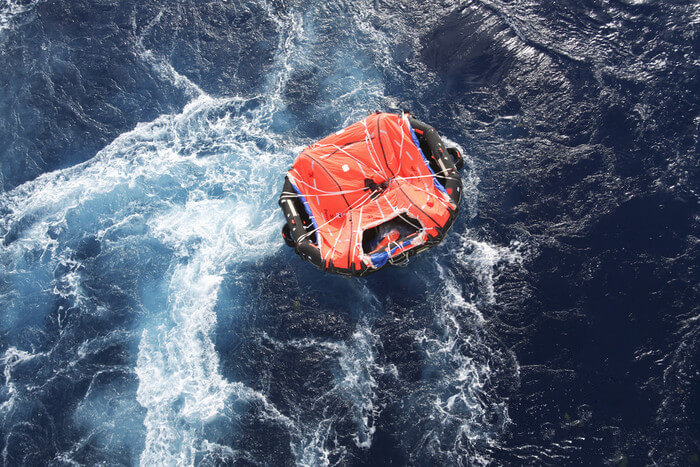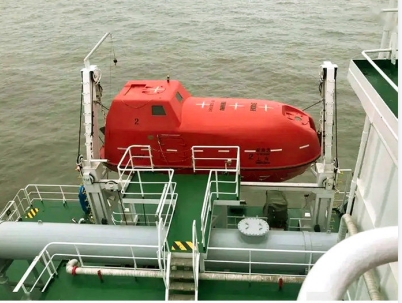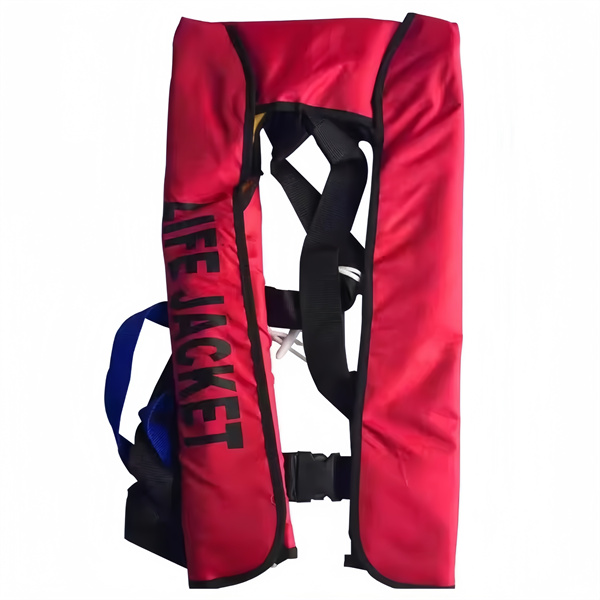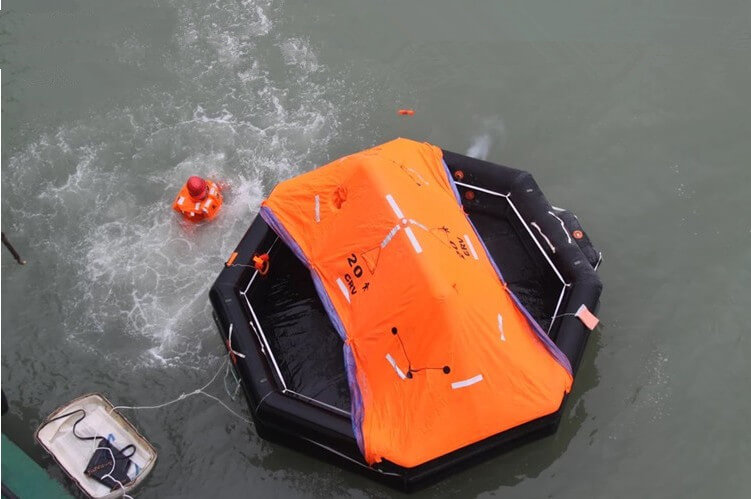What are the Key Innovations in Life-Saving Equipment for Maritime Operations
Table of Contents
To ensure the safety of crew members, passengers, and cargo in maritime operations, life-saving equipment plays a critical role. Advances in technology have driven significant innovations in this area, enhancing the effectiveness, reliability, and accessibility of life-saving equipment. This article explores some of the key technological innovations in life-saving equipment for maritime operations, highlighting their impact on improving safety at sea.

The Importance of Life-saving Equipment in Maritime Operations
Maritime environments present numerous hazards such as unpredictable weather, mechanical failures, and collisions, making effective life-saving equipment essential for mitigating risks.
- Ensures Crew and Passenger Safety: Life-saving equipment provides immediate protection during emergencies, ensuring the survival of individuals in dangerous maritime conditions.
- Facilitates Quick Evacuation: Equipment such as lifeboats, life rafts, and marine evacuation systems enable rapid evacuation in critical situations, minimizing the risk of injury or loss of life.
- Improves Chances of Rescue: Devices like GPS-equipped life jackets and personal locator beacons help rescue teams quickly locate and assist individuals in distress, reducing search times.
- Mitigates the Impact of Maritime Hazards: Life-saving equipment helps protect against a variety of maritime hazards, including fires, capsizing, collisions, and severe weather.
- Ensures Regulatory Compliance: International maritime laws require vessels to be equipped with specific life-saving equipment to enhance operational safety and reduce fatalities in emergencies.
- Supports Operational Safety: By having reliable life-saving equipment on board, maritime operations can continue with greater confidence, knowing that safety measures are in place to handle emergencies effectively.

The Evolution of Life-saving Equipment in Maritime Operations
| Time Period | Life-saving Equipment | Key Developments | Impact on Safety |
| Early 19th Century | Basic Life Jackets and Lifeboats | Cork-filled life jackets and manually-operated lifeboats | Basic flotation and manual escape methods, limited effectiveness |
| Mid 20th Century | Inflatable Life Rafts and Improved Life Jackets | Introduction of inflatable life rafts, synthetic life jackets | Enhanced buoyancy and faster deployment, increased survival rates |
| Late 20th Century | Marine Evacuation Systems (MES) | Rapid evacuation systems with inflatable slides and rafts | Faster, safer mass evacuation from large vessels |
| Early 21st Century | Smart Life Jackets and Self-Righting Lifeboats | GPS-equipped life jackets, automatic inflating systems, and self-righting lifeboats | Improved tracking, quick inflation, increased safety in rough seas |
| Current Era | Autonomous Rescue Boats and Drones | Unmanned rescue boats and drones with thermal imaging and GPS | Faster and more precise search and rescue operations |

The Latest Advancements in Life-Saving Equipment for Maritime Operations
1. Smart Life Jackets
Traditional life jackets have been a staple in maritime safety, but recent advancements have turned these into smart life jackets equipped with GPS, automatic inflation systems, and distress signal transmitters. These innovations ensure that individuals are not only buoyant in the water but can also be quickly located in the event of an emergency.
- Automatic Inflation: Modern life jackets can automatically inflate upon water immersion, ensuring immediate buoyancy without manual intervention. This feature is especially critical for individuals who may be incapacitated or unconscious.
- GPS Tracking and Location Devices: Integrated GPS technology allows rescue teams to precisely track the location of individuals wearing smart life jackets, significantly reducing search and rescue times.
- Integrated Lights and Signals: Many life jackets are now equipped with LED lights and emergency beacons that help increase visibility in dark or rough conditions, improving chances of rescue.

2. Self-Righting Lifeboats
Lifeboats are a key component of maritime emergency response systems. Traditional lifeboats, while effective, can capsize in rough seas, making rescue operations difficult. Self-righting lifeboats, designed to automatically return to an upright position if overturned, offer a major advancement in safety.
- Self-Righting Mechanism: These lifeboats are engineered with specific weight distribution and hull designs that allow them to flip back to an upright position after capsizing, ensuring that the occupants remain safe in turbulent conditions.
- Improved Navigation Systems: Modern lifeboats are equipped with advanced navigation tools such as radar, GPS, and radio communication devices, enabling them to signal for help and navigate effectively toward safety.

3. Marine Evacuation Systems (MES)
In large maritime vessels like cruise ships and ferries, rapid evacuation is crucial in emergencies. Marine Evacuation Systems (MES) have revolutionized the speed and efficiency of evacuating passengers from ships to safety.
- Inflatable Chutes and Rafts: MES typically consists of large inflatable chutes or slides that guide passengers into waiting life rafts. These systems can deploy quickly and can accommodate hundreds of passengers within minutes.
- Automated Deployment: Innovations in MES include automated systems that detect emergencies, such as fires or sinking, and deploy evacuation systems without manual activation, reducing response time and human error.
- Capacity and Compact Design: New MES designs can handle a large number of people in a short time and are compactly stored on vessels, taking up minimal space while offering maximum safety.
4. Personal Locator Beacons (PLBs)
Personal Locator Beacons (PLBs) are portable emergency devices that can transmit distress signals via satellite to alert rescue authorities of an emergency. These devices are lightweight, easily carried by crew members, and can operate globally.
- Satellite Connectivity: PLBs use satellite systems such as COSPAS-SARSAT to send distress signals, ensuring coverage even in the most remote areas of the ocean.
- Enhanced Battery Life: Recent technological improvements have extended the battery life of PLBs, allowing them to transmit distress signals for longer durations, crucial for extended rescue missions.
- Waterproof and Impact-Resistant Design: These devices are built to withstand harsh maritime conditions, ensuring that they remain functional even in water or after impacts.
5. Drones for Search and Rescue
Unmanned aerial vehicles (UAVs), commonly known as drones, are increasingly being used in search and rescue operations at sea. Equipped with high-definition cameras, thermal imaging, and GPS, drones provide real-time information to rescuers.
- Aerial Surveillance: Drones can quickly cover large areas of the ocean, significantly speeding up the search process in rescue operations.
- Thermal Imaging: Drones equipped with thermal imaging technology can detect heat signatures from humans, even in low visibility or nighttime conditions, making them highly effective for locating individuals in the water.
- Delivery of Emergency Supplies: In addition to surveillance, some drones are designed to drop life-saving supplies such as flotation devices, first-aid kits, and communication tools to people in distress before rescue teams arrive.
6. Autonomous Rescue Boats
One of the latest innovations in maritime life-saving technology is the development of autonomous rescue boats. These vessels operate without a crew and can be dispatched to rescue individuals or provide assistance in dangerous or difficult-to-reach areas.
- Remote Control and AI Navigation: Autonomous rescue boats are equipped with artificial intelligence and remote control systems, allowing them to navigate independently and avoid obstacles while searching for survivors.
- Quick Deployment: These boats can be launched quickly in emergencies, reducing the time it takes to reach individuals in distress.
- Assistance in Hazardous Conditions: Autonomous rescue boats can be deployed in situations where it is too dangerous for human rescuers, such as during severe storms or near hazardous debris.
7. Improved Fire Suppression Systems
Fires aboard ships are one of the most dangerous emergencies. Innovations in fire suppression systems have significantly improved the ability to detect, contain, and extinguish fires on maritime vessels.
- Water Mist Systems: Advanced water mist systems use fine water sprays to suppress fires by cooling the flame and displacing oxygen. These systems are highly effective in confined spaces and are more efficient than traditional sprinkler systems.
- Fire Detection Sensors: Modern fire suppression systems are equipped with sensitive smoke and heat detection sensors that trigger alarms and activate suppression systems before fires spread.
- Automatic Fire Doors and Containment: Ships are now equipped with automatic fire doors that isolate fire-prone areas, preventing the spread of flames and allowing safe evacuation of the crew.

Overall, technological innovations in life-saving equipment are transforming maritime safety, making it possible to respond more quickly and effectively to emergencies, improving rescue efficiency and minimizing human error.


